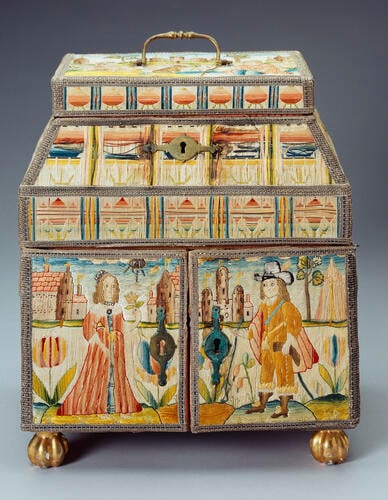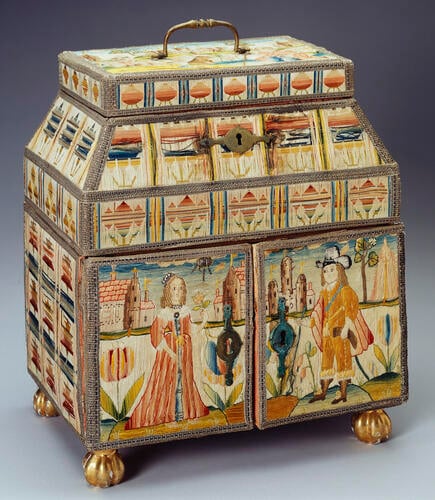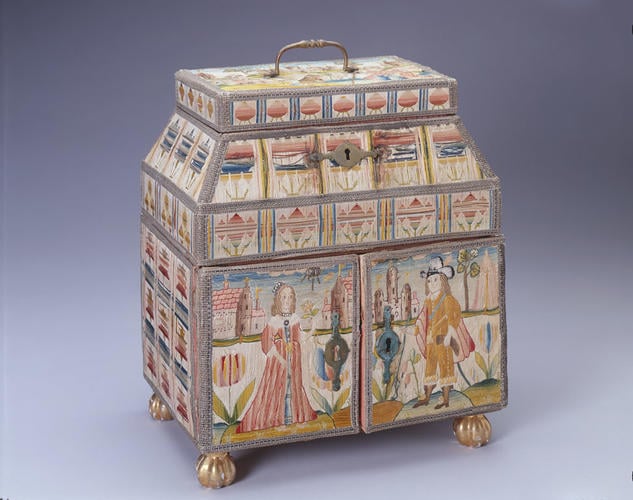-
1 of 253523 objects
Needlework casket 1626-49
Silk needlework, mirror glass, leather, silver thread, wool, silk, giltwood | 28.2 x 24.0 x 17.2 cm (whole object) | RCIN 37036
-
This casket or small cabinet is covered with long stitch needlework in silk, with a scene of figures in a landscape on the top, which opens, and a figure on each of the doors. The cabinet opens in three places and includes divisions, recesses, drawers and hidden compartments, and contains several small articles. Needlework caskets such as these were used for a variety of purposes and frequently contained receptacles for ink and sand, bottles for perfumes and sections for combs and needlecases. The lower portion, consisting of small drawers, often included hidden compartments at the back, found by pulling out partitions.
Also known as ‘The Little Gidding Cabinet’, this casket was probably the work of one of the Miss Colletts, nieces of Nicholas Ferrar who founded the Little Gidding community in Huntingdonshire in 1626. Both girls, who were famous for their skills at needlework and embroidery, were brought up in the community, which devoted itself to prayer, fasting and almsgiving. According to tradition, the casket was acquired by Charles I and left with the community for safekeeping. The cabinet remained in the Collett family and was eventually sold, with other relics from the community, in 1892. It was purchased by Queen Victoria for £25.
The same community produced the 'Little Gidding Concordances', RCIN 1123464.Provenance
Purchased by Queen Victoria, 1892
-
Creator(s)
(embroiderer)(nationality)Acquirer(s)
-
Medium and techniques
Silk needlework, mirror glass, leather, silver thread, wool, silk, giltwood
Measurements
28.2 x 24.0 x 17.2 cm (whole object)
Category
Place of Production
Little Gidding [Cambridgeshire]


